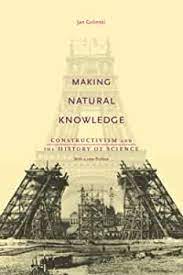Scott, J. C. (1998). Seeing Like a State: How Certain Schemes to Improve the Human Condition Have Failed. New Haven and London: Yale University Press.
Review by Michael Beach
As the title implies, James C. Scott references several national policies in different economic and political universes that claimed to seek the betterment of the people living within a given sphere of control. Then, Scott goes on to discuss some of the failures within his example state policies. His focus is on policies that are adopted from the perspective of ‘high modernism’, or in other words, highly planned and symbolic communities as opposed to those whose growth is more organic.
Scott defines high-modernism as clean, sharp, repetitious, and completely planned. For example, one can drive around a subdivision in America and every house looks the same with every yard laid out in a way that keeps the ominous HOA off the back of the homeowner. More organic cities and neighborhoods are those that are more post-modern where each is unique, and the growth seems hodge-podge and random. Scott compares public policy and the effects of high-modernist and post-modernist with various art movements that followed similar courses.
The two main examples Scott uses are the Soviet Union collectivization, compulsory villagization in Tanzania. In each case the hoped-for outcomes were less than desired. People resisted the government efforts resulting in police-state approaches. For Scott, these examples show “how routinely planners ignore the radical contingency of the future” (Scott, 1998, p. 343). One of the fallacies he points out is how in planning there is a need for “standardizing the subjects of development” (p. 345). By assuming all the people to be roughly the same then planners can create buildings, parks, roads, market areas, etc. the same. Other things need to be standardized as well such as assumptions about weather, geologic forces, external economic effects, or other social movements that are guessed to be more or less the same in the future as they have been in the past.
Scott makes a plea for what he calls ‘metis-friendly institutions’. Those institutions that are tasked with planning should be “multifunctional, plastic, diverse, and adaptable” (p. 353). The issue he has with high-modernism is its general approach at simplifying the variables it plans for. Instead of one-size-fits-all, he is advocating for more voices in the process and a willingness to let go of efficiency in the name of sameness.










 RSS Feed
RSS Feed